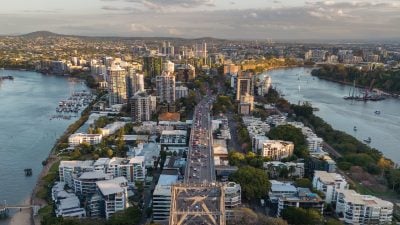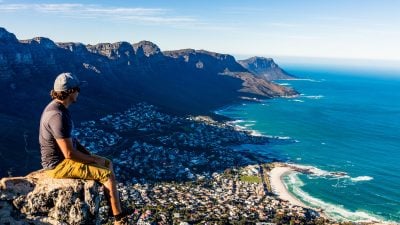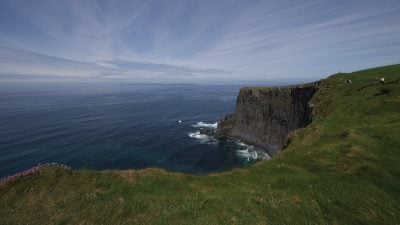Home / Latin America & Antarctica / Peru / Machu Picchu: Peru’s Ama…

Machu Picchu: Peru’s Amazing Citadel in the Clouds
Much has been written about Machu Picchu and it’s no wonder. The reasons for this, in my opinion, are, first, because of its location and the surrounding breathtaking panoramic views, second, because you discover what was an ancient, active Inca city and three, because it’s not all that easily accessible making more desirable. Other opinions will be proffered, I’m sure.
Where Exactly is Machu Picchu and How to Get There?
Machu Picchu stands 2,430 metres/7970 feet above sea-level in the middle of a tropical mountain forest. It is 80 kilometres/50 miles North West of Cusco, the ancient Inca capital, situated on the crest of the mountain called Machu Picchu. It is actually lower in altitude than Cusco which is over 1000 metres/3300 feet higher.
You are more than likely to begin your visit from Cusco. There are 3 ways to consider getting to Machu Picchu from here. The first is by train to the nearest settlement, Aguas Calientes, a small town at the foot of the mountain. The second is to consider a bus journey to Ollantaytambo with its interesting Inca ruins and well worth a stopover, then the train to Aguas Calientes. The third is to take the 4 Day Inca Trail Trek (more on this later). It is highly recommended to stay in Aguas Calientes overnight then visit the site first thing in the morning to avoid the crowds.
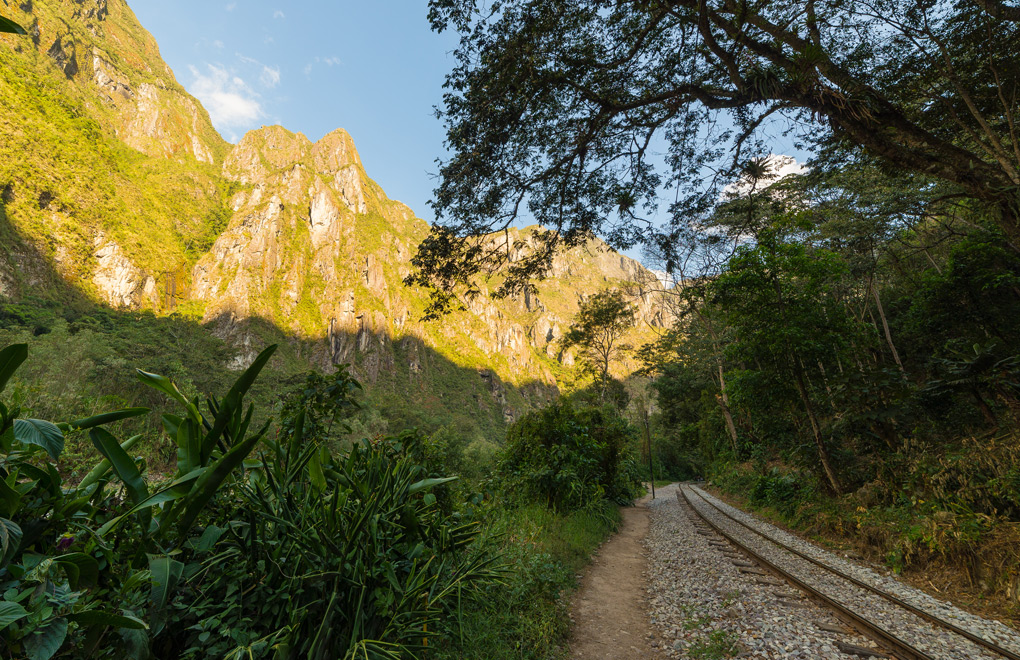
So you are at the foot of the mountain and now, there are 2 ways of reaching Machu Picchu. Almost all visitors take the bus on a 25 minute journey. The alternative is to walk up the steep mountain path for 8 kilometres/5 miles. This is obviously for the very fit as apart from the steep climb, the effect of the altitude has to be considered. There is a plus to walking though. The views en route are amazing.
When is the Best Time to Visit?
There are two distinct weather seasons at Machu Picchu. There are the wet and dry seasons with the majority of annual rain falling from October through to April. However, it can rain at any time of the year.
What is Machu Picchu?
It is a complex of palaces and plazas, temples and homes and may have been built as a ceremonial site, a military stronghold, or a retreat for ruling elites. The ruins lie on a high ridge surrounded on three sides by the Urubamba River some 610 metres/2000 feet below.
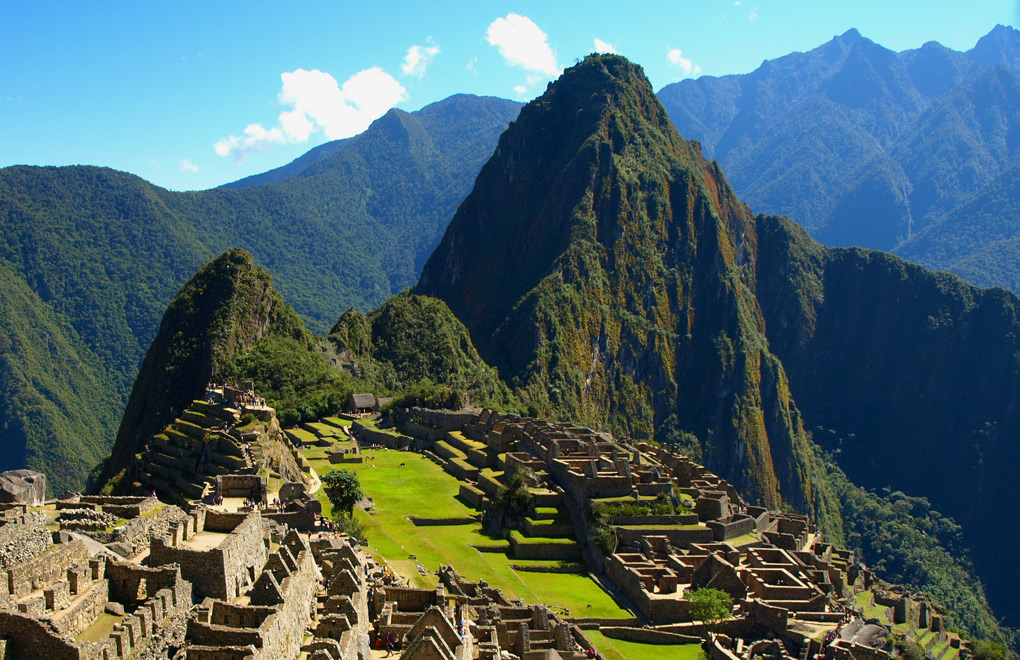
Machu Picchu was built around 1450 at the height of the Inca Empire. Its construction appears to date to the period of the two great Incas, Pachacutec Inca Yupanqui (1438–71) and Tupac Inca Yupanqui (1472–93).
The site is roughly divided into an urban sector and an agricultural sector. The upper town is where the temples are which were used for religious and ceremonial purposes. The lower town is where the lower class people lived. It includes storage buildings and simple houses.
It was probably the most amazing urban creation of the Inca Empire at its height and its giant walls, terraces and ramparts seem as if they have been cut naturally into the rock escarpments. The city was made of cut stone fit together without mortar so tightly that its cracks still can’t be penetrated by a knife blade. It is estimated that 60% of the construction done by the Incas at Machu Picchu was underground including deep building foundations and crushed rock for drainage.
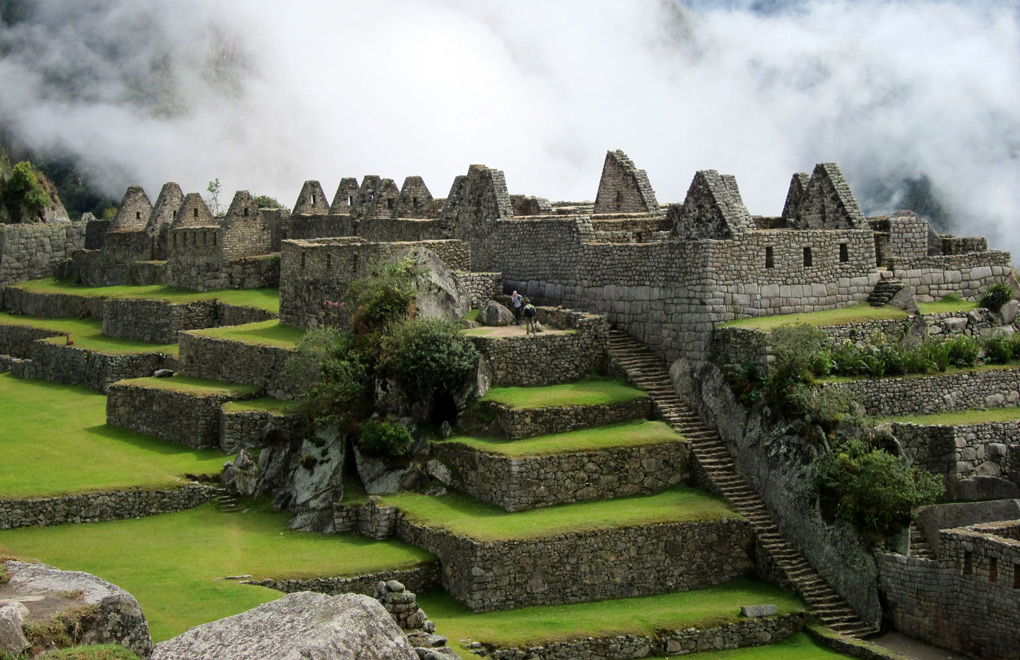
Scholars are still striving to uncover clues to the mysteries hidden here. Many landmarks both man-made and natural appear to align with astronomical events such as the solstice sunset.
The Incas had no written language so they left no record of why they built the site or how they used it before it was abandoned in the early 16th Century.
The Discovery of Machu Picchu
Although it is located not too far from Cusco, luckily the Spanish never found it and so did not plunder or destroy it as they did many other sites. Over the centuries, the surrounding jungle grew over the site and few outside the immediate area knew of its existence. It was discovered accidentally by Hiram Bingham, an American historian and lecturer at Yale University. In 1911 a Peruvian guide led Hiram Bingham up a steep mountainside and into the history books as the first Western scholar to lay eyes on the “lost city” of Machu Picchu. However, Hiram Bingham was, at the time, leading a small expedition in search of the ‘lost city’ of Vilcabamba, the last refuge of the Inca Manco Capac II, who fought against the Spanish conquerors in the 1530s. An estimated 40,000 artifacts were excavated from Machu Picchu and sent to Yale University for further study including mummies, ceramics, silver statues, jewellery and bones.
Since re-discovery over 30% of Machu Picchu has been reconstructed to give a better idea of how the original structures looked and restoration continues today.
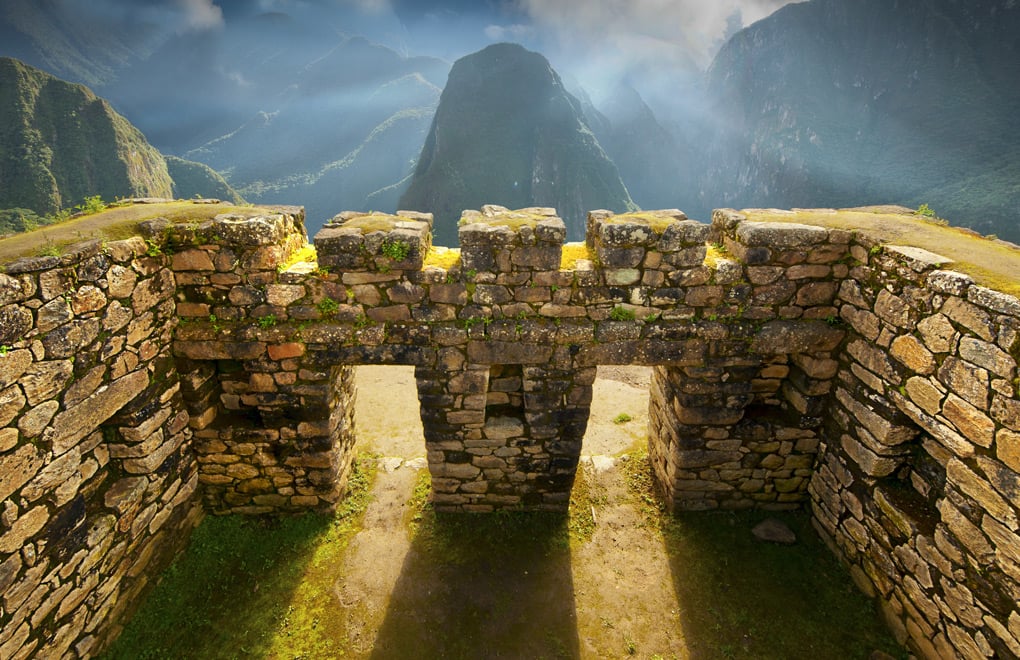
Some Interesting and Unusual Facts about Machu Picchu
- The incredible civil engineering techniques of the Incas reduced the affects of frequent earthquakes. Machu Picchu is built on 2 fault lines. However, the construction protects it whenever Peru suffers an earthquake. The stones of Machu Picchu are reputed to “dance” or bounce during an earthquake and then fall back into their rightful place.
- Every year marathoners race along the 26-mile long Inca Trail. The fastest time is 3-hours and 26 minutes.
- Archaeologists blame a smallpox epidemic, brought to Machu Picchu by Spanish Conquistadors, for killing the original population.
- Machu Picchu was designated a UNESCO World Heritage Site in 1983 and was named one of the New Seven Wonders of the World in 2007.
- In the Quechua Indian language, “Machu Picchu” means “Old Peak” or “Old Mountain.”
- Machu Picchu is made up of more than 150 buildings ranging from baths and houses to temples and sanctuaries.
- Although many of the stones that were used to build the city were more than 50 pounds, it is believed that no wheels were used to transport these rocks up the mountain. Rather, it is thought that hundreds of men pushed the heavy rocks up the steep mountain side.
- Machu Picchu was an astronomical observatory and its sacred Intihuatana stone accurately indicates the two equinoxes. Twice a year, the sun sits directly over the stone creating no shadow.
- One of the strange things about Machu Picchu is that the site provides virtually no information about the ruins. There is a good museum near the site called the Museo de Sitio Manuel Chavez Ballon. It explains about how and why Machu Picchu was built (displays are in English and Spanish), and why the Inca chose such an extraordinary natural location. However, first you have to find the museum as it is inconveniently tucked away at the end of a long dirt road near the base of Machu Picchu
Trekking the Inca Trail
On his first trip to the site, Hiram Bingham walked for six days. Today many choose to follow in his footsteps by hiking to the ruins on the legendary Inca Trail. However, it is not possible to do the trek independently. Due to heavy use and the subsequent environmental impact, the trail has become heavily regulated. Visitors must sign up with an organized group starting in Cusco to take the classic four-day route or the recently added two-day option. About 20% of visitors to Machu Picchu undertake a trek. The trek which is 82 kilometres/51 miles in length is not for the faint-hearted because of the altitude, the steep climbs and the basic accommodation.
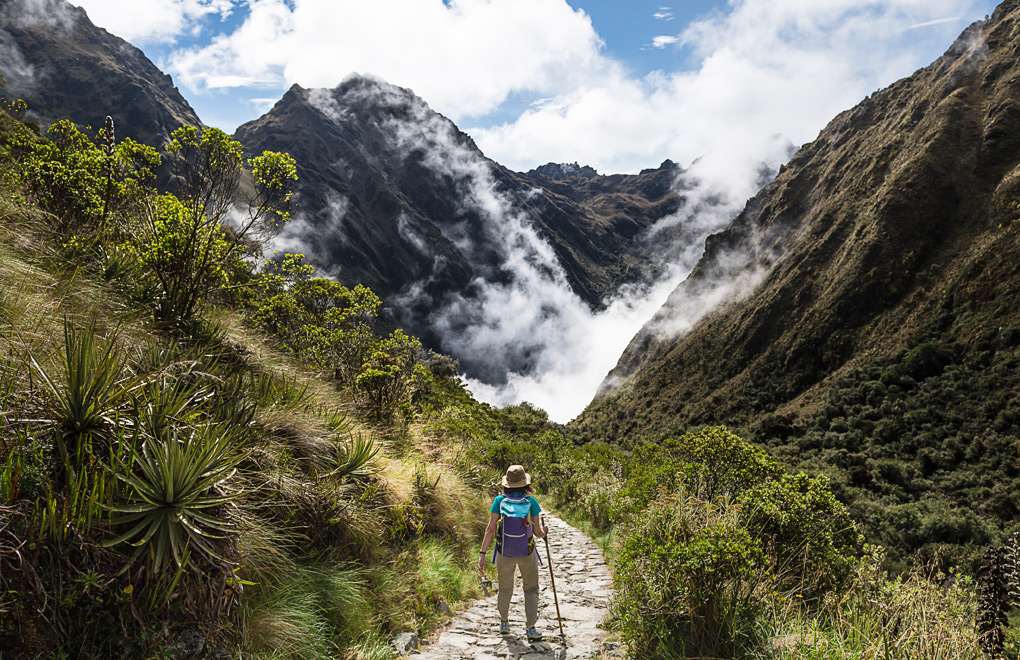
Only authorized trekking companies are allowed to operate this trek. All guides on the Inca Trail must be licensed and only a limited number of trekking permits are issued. It should be noted that the Inca Trail is closed in February and that it is necessary to reserve several months in advance.
If you want an extraordinary experience combining awe-inspiring scenery, an exciting glimpse into history and bringing back amazing pictures, do add Machu Picchu to your vacation plans.
For more Peru vacation travel ideas and for travel information on Machu Picchu, visit our website at www.goway.com or speak with one of our destination specialists and book your vacation today.
Get more travel inspiration by email.
Subscribe
0 Comments

Get the latest travel trends & hear about the best deals on vacations around the world.
If you’re a Globetrotter, these are the newsletters for you!

